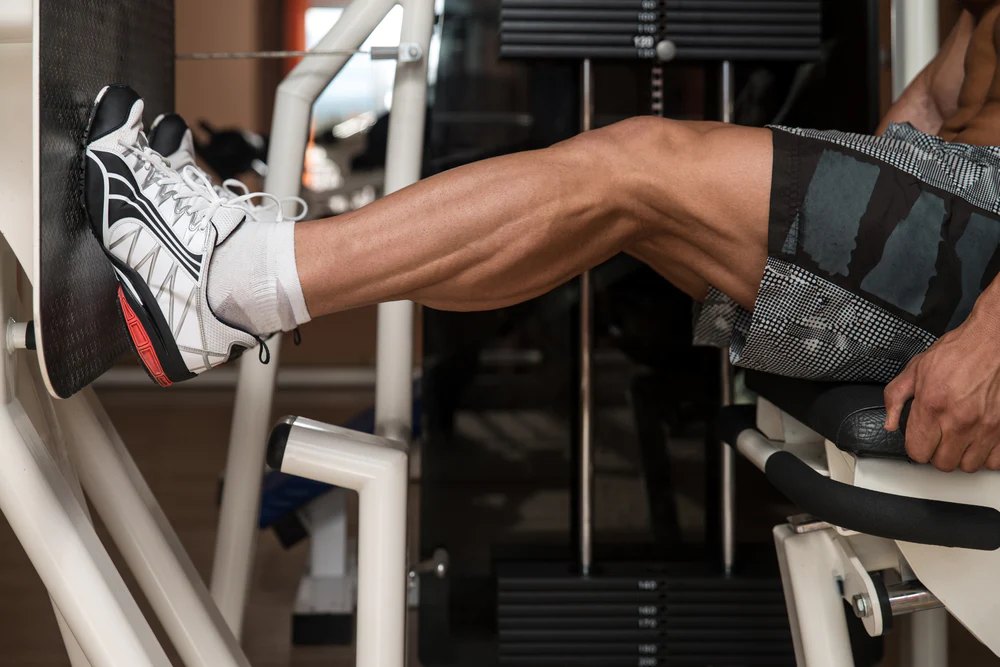When it comes to lower leg strength and stability, the tibialis anterior muscle plays a crucial role. This muscle, located on the front of the shin, is responsible for dorsiflexion, which is the movement of pulling the foot towards the shin. Tibialis raises are a specific exercise that target and strengthen the tibialis anterior, but do they actually help strengthen the ankles? In this blog, we will explore the benefits of tibialis raises for ankle strength and stability, dive into the mechanics of the exercise, and provide techniques for proper execution.
Understanding Tibialis Raises and the Tibialis Bar
When we talk about to lower leg exercises, the tibialis raises and the tibialis bar are often overlooked but incredibly beneficial. These exercises specifically target the tibialis anterior muscle, which is located on the front of the shin. The tibialis anterior plays a crucial role in ankle strength, stability, and overall lower leg function. In this blog, we will explore the benefits of tibialis raises and the use of the tibialis bar in strengthening this muscle group.
What are Tibialis Raises?
Tibialis raises, also known as dorsiflexion exercises, involve lifting the foot and bringing the toes towards the shin. This movement activates the tibialis anterior muscle, which is responsible for controlling dorsiflexion. By engaging in tibialis raises regularly, you can strengthen this muscle and improve its function.
The Benefits of Tibialis Raises and Tibialis Bar Exercises:
- Strengthening the Tibialis Anterior: Tibialis raises primarily focus on the tibialis anterior muscle, which plays a significant role in ankle dorsiflexion. By performing tibialis raises using the tibialis bar, you engage and strengthen this muscle, leading to improved ankle strength and stability. Stronger tibialis anterior muscles can help prevent ankle injuries and enhance overall lower leg function.
- Improved Ankle Mobility and Flexibility: Regular tibialis raises can enhance ankle mobility and flexibility. Strengthening the tibialis anterior muscles allows for greater control and range of motion during ankle dorsiflexion. This increased mobility can positively impact various activities such as walking, running, and sports that involve jumping or quick directional changes.
- Enhanced Balance and Stability: Strong tibialis anterior muscles contribute to better balance and stability. These muscles help control the movement of the foot and ankle, reducing the risk of ankle sprains and improving overall body stability. Incorporating tibialis raises into your fitness routine can enhance your ability to maintain balance and stability during physical activities.
- Injury Prevention: Ankles are vulnerable to injuries, particularly sprains. Strengthening the tibialis anterior muscles through tibialis raises can help prevent common ankle injuries by providing better support and stability to the ankle joint. By making your ankles more resilient, you can engage in physical activities with reduced risk of injury.
- Rehabilitation and Recovery: Tibialis raises using the tibialis bar can also be beneficial during ankle rehabilitation and recovery. Strengthening the tibialis anterior muscles aids in restoring functionality and regaining strength after ankle injuries or surgeries. Consult with a healthcare professional or a qualified trainer to incorporate tibialis raises into your rehabilitation program effectively.
Variations of Tibialis Raises
There are several variations of tibialis raises that can add variety and challenge to your ankle-strengthening routine. Some options include:
- Standing Tibialis Raises: Stand upright with your feet flat on the ground. Lift your toes towards your shins, engaging the tibialis anterior, and then lower them back down.
- Weighted Tibialis Raises: Hold a dumbbell or weight plate on top of your toes while performing tibialis raises to increase resistance and challenge the muscle further.
- Seated Calf Raise Machine: Utilize a seated calf raise machine at the gym, adjusting the settings to target the tibialis anterior specifically.
Proper Execution of Tibialis Raises
Tibialis raises, also known as dorsiflexion exercises, are an effective way to target and strengthen the tibialis anterior muscle, which is located on the front of the shin. These exercises can help improve ankle stability, prevent injuries, and enhance overall lower leg function. To ensure you perform tibialis raises correctly and maximize their benefits, follow these guidelines for proper execution:
- Warm-Up: Before starting any exercise, it’s essential to warm up your muscles. Engage in a brief cardiovascular activity, such as jogging or cycling, for 5-10 minutes to increase blood flow and warm up the lower leg muscles.
- Positioning: Stand upright with your feet hip-width apart. You may choose to hold onto a stable surface, such as a wall or chair, for balance and support during the exercise.
- Foot Placement: Place the balls of your feet firmly on the edge of a step, platform, or elevated surface. Allow your heels to hang off the edge, ensuring your toes are pointing forward.
- Engaging the Tibialis Anterior: Start by slowly lowering your heels towards the ground. As you do so, focus on contracting the tibialis anterior muscle to lift the front of your feet towards your shins. Maintain control throughout the movement.
- Range of Motion:Lower your heels as far as comfortably possible, feeling a stretch in the calf muscles. Then, raise your toes and the front of your feet towards your shins, focusing on activating the tibialis anterior. Aim to achieve a full range of motion in each repetition.
- Controlled Movement: Perform tibialis raises in a slow and controlled manner, avoiding any sudden or jerky movements. This helps maintain proper form and ensures that the tibialis anterior muscles are effectively targeted.
- Repetitions and Sets: Start with a manageable number of repetitions, such as 10-12, and gradually increase as your strength and endurance improve. Aim to complete 2-3 sets of tibialis raises during your workout.
- Breathing: Remember to breathe naturally throughout the exercise. Inhale as you lower your heels and exhale as you raise your toes towards your shins.
Incorporating Tibialis Raises into Your Workout Routine
To reap the maximum benefits of tibialis raises, consider incorporating them into your regular exercise routine. Here are a few tips:
- Start with 2-3 sets of 10-15 repetitions, gradually increasing the intensity as you get stronger.
- Perform tibialis raises at least twice a week, allowing enough time for recovery and muscle growth.
- Combine tibialis raises with other lower leg exercises, such as calf raises and ankle rotations, for a well-rounded lower leg workout.
- Consider using additional resistance, such as ankle weights or resistance bands, to further challenge your tibialis anterior muscles.
- Listen to your body and adjust the exercise difficulty or range of motion as needed. Seek guidance from a fitness professional if you have any concerns or specific requirements.
In conclusion, the tibialis bar is a game-changer in the realm of lower leg training. By incorporating tibialis bar exercises into your fitness routine, you can strengthen your tibialis anterior muscles, improve ankle stability, enhance balance, and boost overall performance in various activities. Whether you’re an athlete, a fitness enthusiast, or simply someone looking to take your lower leg strength to the next level, the tibialis bar offers an effective and versatile solution. Embrace the power of the tibialis bar and witness the transformation in your lower legs and overall performance. Get ready to unleash your true potential and conquer new fitness milestones.





